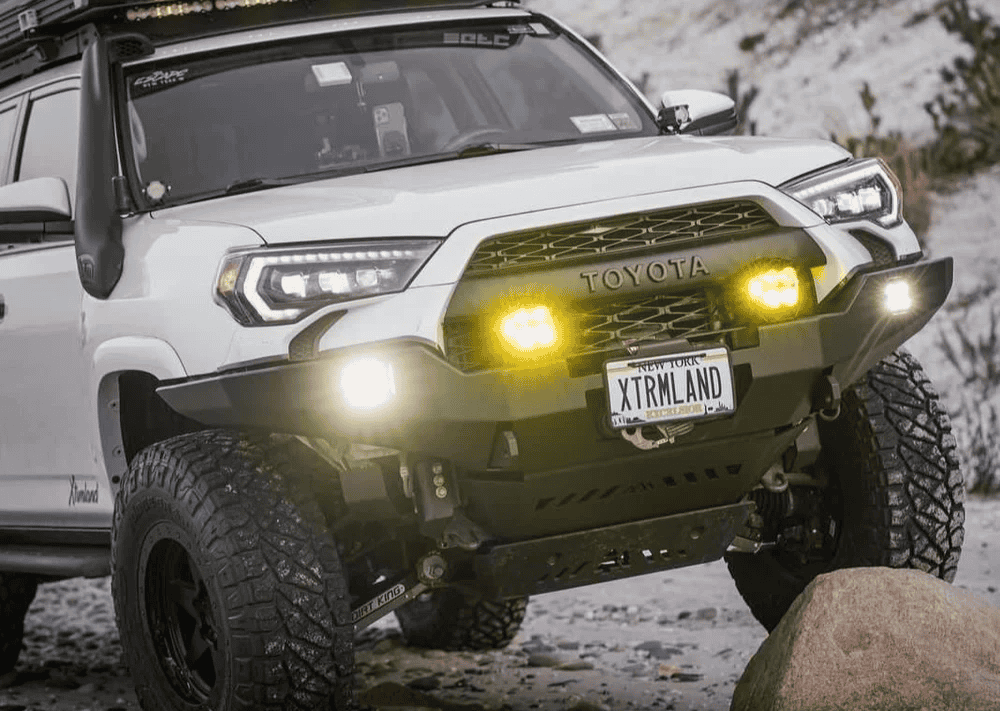Overland Vehicles

Onboard air turns a rig into its own service station. After airing down for traction, you can reseat tires quickly and precisely, which means better control and reduced wear on your way back to pavement. With a quality compressor, you can also run air tools for trail repairs and power air lockers that need steady regulated pressure.
ARB units are known for quick recovery and reliable duty cycles, which matters when you are filling four large tires in rough weather. The right install influences more than speed. It affects noise, heat, moisture resistance, and long term serviceability. Think of the compressor as a heartbeat. Placement, wiring, and airflow determine how hard that heart has to work.
A clean install begins with a realistic load profile. Estimate how often you air up, the size of your tires, and whether you will power lockers or tools. Duty cycle and CFM guide the compressor selection while thermal management informs placement. Avoid hot zones that steal output and shorten lifespan.
Common mounting spots include under hood trays, cabin cavities, or enclosed cargo areas with ducted ventilation. The ideal location is high, dry, and shielded from road spray yet serviceable without pulling half the interior. Vibration isolation keeps brackets from transmitting noise into the cabin. Plan airflow in and out. A compressor breathes. If you box it in, provide intake and exhaust paths with mesh to keep debris out. Where possible, face the intake away from splash zones and consider a remote intake filter in a cleaner pocket.
Compressors pull serious current on startup. Use appropriately sized cable runs with a dedicated fuse near the battery and a relay triggered by an ignition or a safe switched source. Protect the harness with abrasion sleeve and secure it at short intervals to avoid chafing. If you run dual batteries or aux power, include proper isolation. Mount the pressure switch and relay in a dry, accessible spot. Place the control switch where you can see and reach it even when wearing gloves. For lockers, a compact manifold can house solenoids, a gauge, and ports for quick diagnostics.
Air lines should take the shortest practical path without hugging heat sources. Use heat resistant hose near the engine bay or reroute through cooler channels. Add edge protection where lines pass through panels and leave gentle radii at bends to reduce restriction. Quick connect couplers placed front and rear make hose access easy at camp, on trail, or at a trailhead. If you add a small tank, include a drain port at the low point to purge moisture. Tanks smooth line pressure for tools and slightly reduce pump cycling.
Noise never disappears but it can be tamed. Rubber isolation feet, mass loaded mounting surfaces, and short soft hose sections between the compressor and hard line help. Intake noise drops when the filter sits in a sheltered, insulated pocket. Keep the intake away from cargo dust and water ingress paths.
A thoughtful install pays dividends when conditions turn ugly. On a cold night after a muddy recovery, you do not want to troubleshoot a slow leak or an overheated relay. Upfront planning and workmanship create a system that just works.
When you are ready to integrate onboard air into a travel ready platform, professional planning separates neat from noisy. OZK Customs engineers installs around your vehicle layout, thermal hotspots, and how you actually use the rig. From protected mounts to tidy manifolds, our team prioritizes access, airflow, and long term reliability.
See how we outfit capable trucks and vans on our Overland Rigs page: Overland Rigs. For a deeper look at tailored upgrades, explore our Custom Overland Upfit approach. Want to understand what sets our process apart. Visit Why Choose OZK Customs.
We build complete adventure platforms that include onboard air, power systems, racks, suspension, lighting, and purpose built interiors. Whether your priority is tire care after a long trail day, locker reliability in winter, or powering tools at camp, we design for clean routing, quiet operation, and fast inflation. Tell us how you travel, and we will shape the install to match.
A smarter way to add onboard air starts here. Share your vehicle, tire size, and goals, and we will map wiring, mounting, and air paths that keep your compressor cool and your lines dry. Our Fayetteville shop hands over systems that work hard without drama, backed by clear walkthroughs at pickup.
OZK Customs builds custom vans, overland rigs, towables, commercial vans, and focused vehicle mods including lifts, suspension upgrades, racks, lighting, and Starlink installation.
Ready to add dependable onboard air without guesswork. Our technicians design clean, serviceable installs that power lockers, inflate tires fast, and keep noise down. Book a consult to plan mounting, wiring, and air routing that fits your rig. Tap the form and let OZK Customs build it right the first time.
ADDRESS:
6159 E Huntsville Rd, Fayetteville, AR 72701
PHONE:
(479) 326-9200
EMAIL:
info@ozkvans.com